Day 4 - Powerscourt & Glendalough
It’s Friday the 12th and today we head south to the picturesque town of Enniskerry, Co. Wicklow, and then to Powerscourt. Finally, we will break loose of the urban sprawl of Dublin and venture out into the countryside. 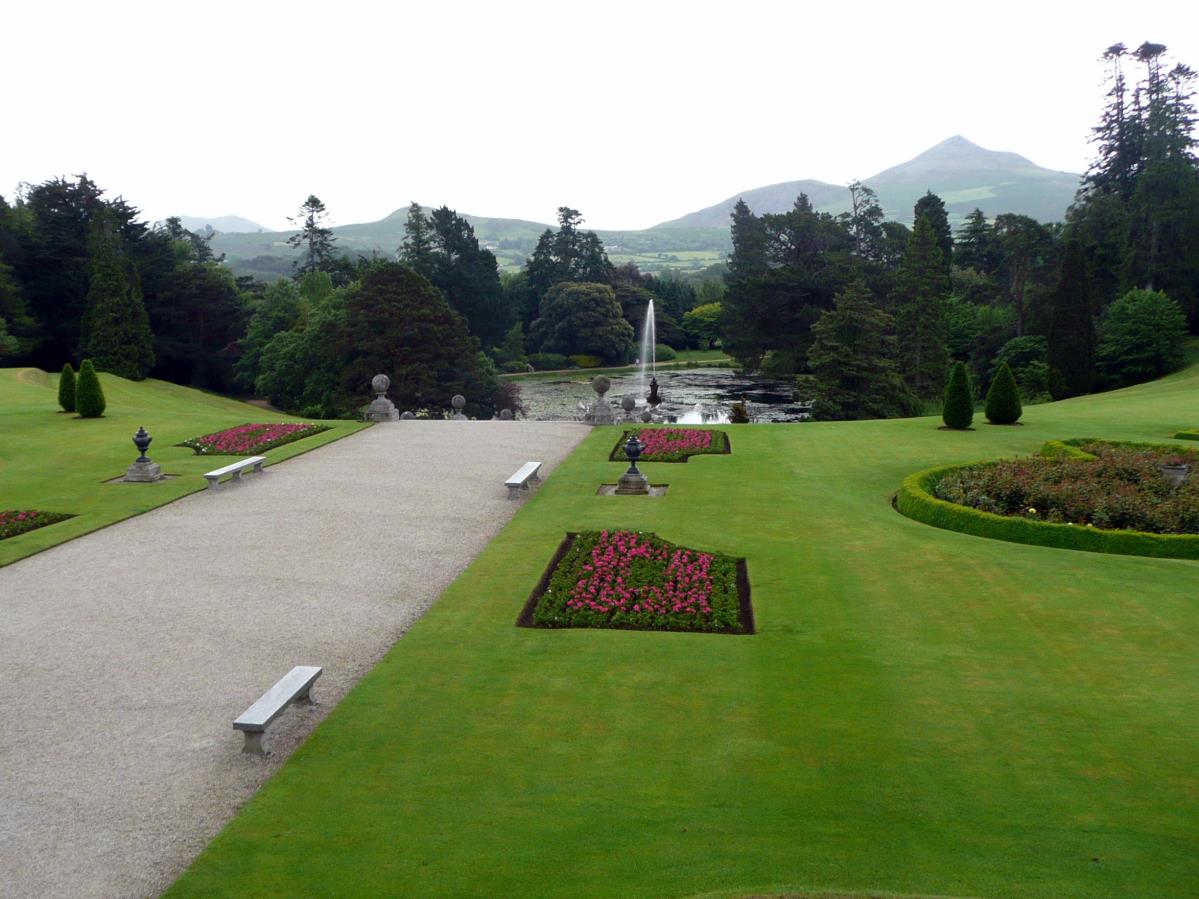
Powerscourt was originally a 13th century castle but is chiefly known today for its elaborate gardens. After passing briefly through the house, I was first struck by the sheer size of the Italian Garden. It stretches for 1200-1500 feet down five terraces to the Triton Lake. The entrance to the Triton Lake is guarded by two winged horses. In the center of the lake is a huge fountain in the likeness of the god Triton rising majestically from the water.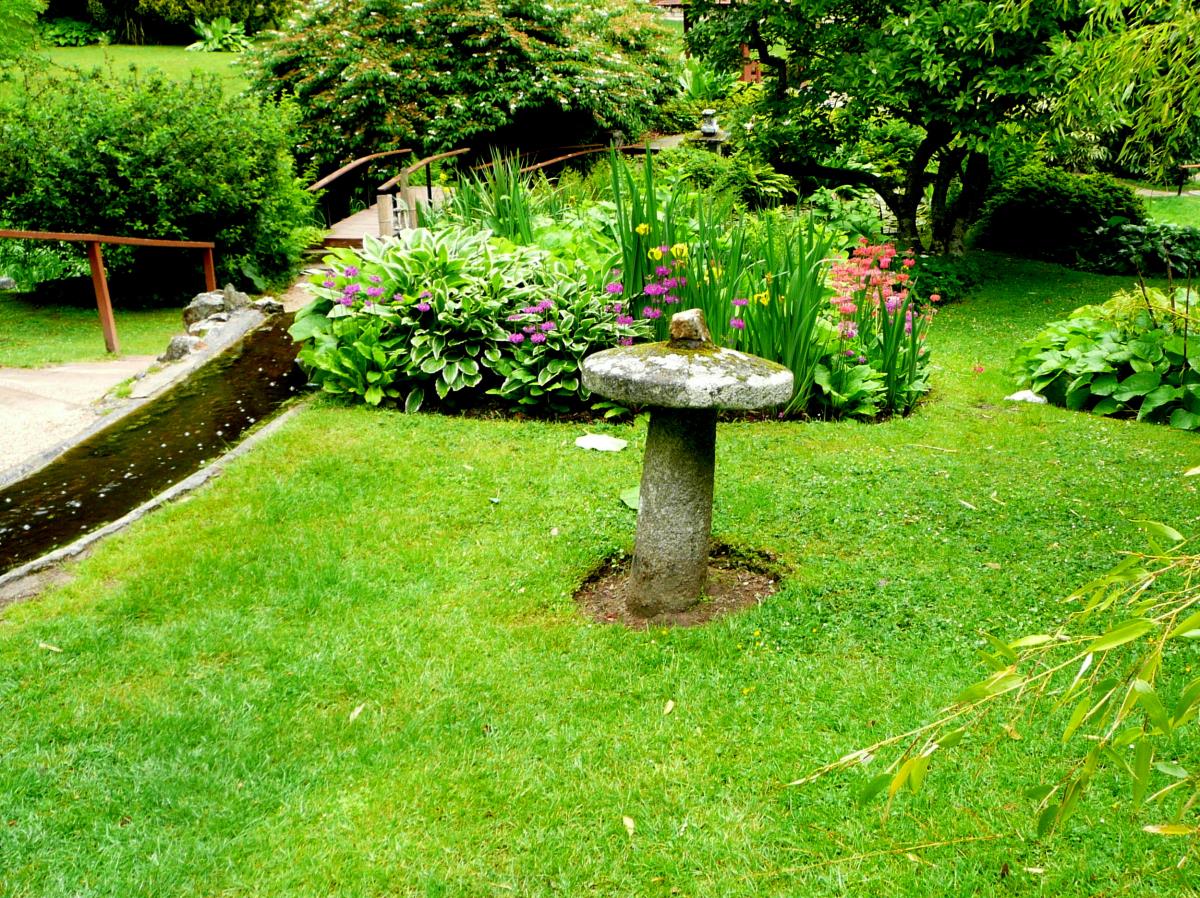 Beyond the lake is the Japanese Gardens. This garden lies on the side of a hill and is riddled with running water and moss lined grottos in the hillside.
Beyond the lake is the Japanese Gardens. This garden lies on the side of a hill and is riddled with running water and moss lined grottos in the hillside.
Proceeding from the Triton Lake I first came upon a hillside lined with conifers. Again, in the background rose Sugarloaf Mtn. A little further along the walkway and I came across a Pets Cemetery. Here were buried many of the pets of the Powerscourt family. Each tombstone was inscribed with a tender note. One I found particularly poignant read simply “Faithful beyond human fidelity”. Truly these were people that felt deeply about their pets.
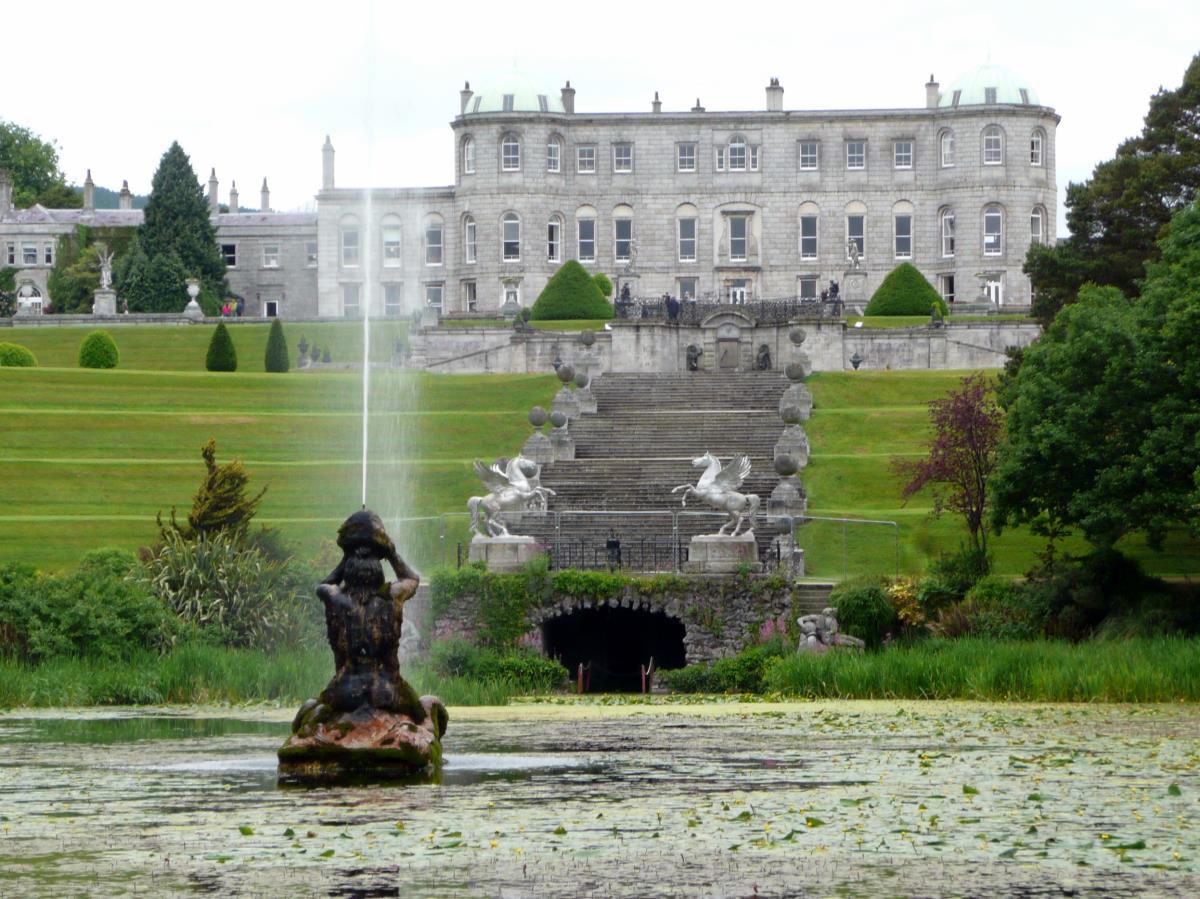 The final garden that I chanced upon was the Walled Gardens, so named because it is traversed by a 10-
The final garden that I chanced upon was the Walled Gardens, so named because it is traversed by a 10-12 foot wall. This garden I found in a style more familiar with what I had experienced throughout Ireland and Scotland.
From Powerscourt, we proceeded through the lovely village of Laragh and then made a brief foray to the Woolen Mill at Avoca, Co. Wicklow. Here we were given a demonstration of how wool is still hand woven for sales throughout the world. The mill has existed on the banks of the River Avoca since 1723. In 1760, a Fly Shuttle Loom, capable of producing 20 meters of cloth a day was installed. The Fly Shuttle Loom was so named because the weaver, jerking on a shuttle mechanism would cause the shuttle to literally fly from side to side. On installation, the local weavers, fearing the loss of their jobs, went on strike thus once again proving that fear can overcome good sense.
From Avoca, we continued to travel southward to Glendalough. In the Irish it is Gleann Dá Loch pronounced glen da lock, the word lough being the equivalent of the Scottish loch, meaning lake. Thus, this is the Glen of the Two Lakes. It is the site of an early monastic settlement founded in the 6th century by St. Kevin, a hermit priest. The settlement flourished for over six centuries being designated as one of two North Leinster dioceses in 1111. In 1398, the English under Roger Mortimer, 4th Earl of March, left it in ruins though it continued as church and place of holy pilgrimage.
pronounced glen da lock, the word lough being the equivalent of the Scottish loch, meaning lake. Thus, this is the Glen of the Two Lakes. It is the site of an early monastic settlement founded in the 6th century by St. Kevin, a hermit priest. The settlement flourished for over six centuries being designated as one of two North Leinster dioceses in 1111. In 1398, the English under Roger Mortimer, 4th Earl of March, left it in ruins though it continued as church and place of holy pilgrimage.
The site is dominated by a Round Tower over 30 meters in height. Towers such as this were often built at religious sights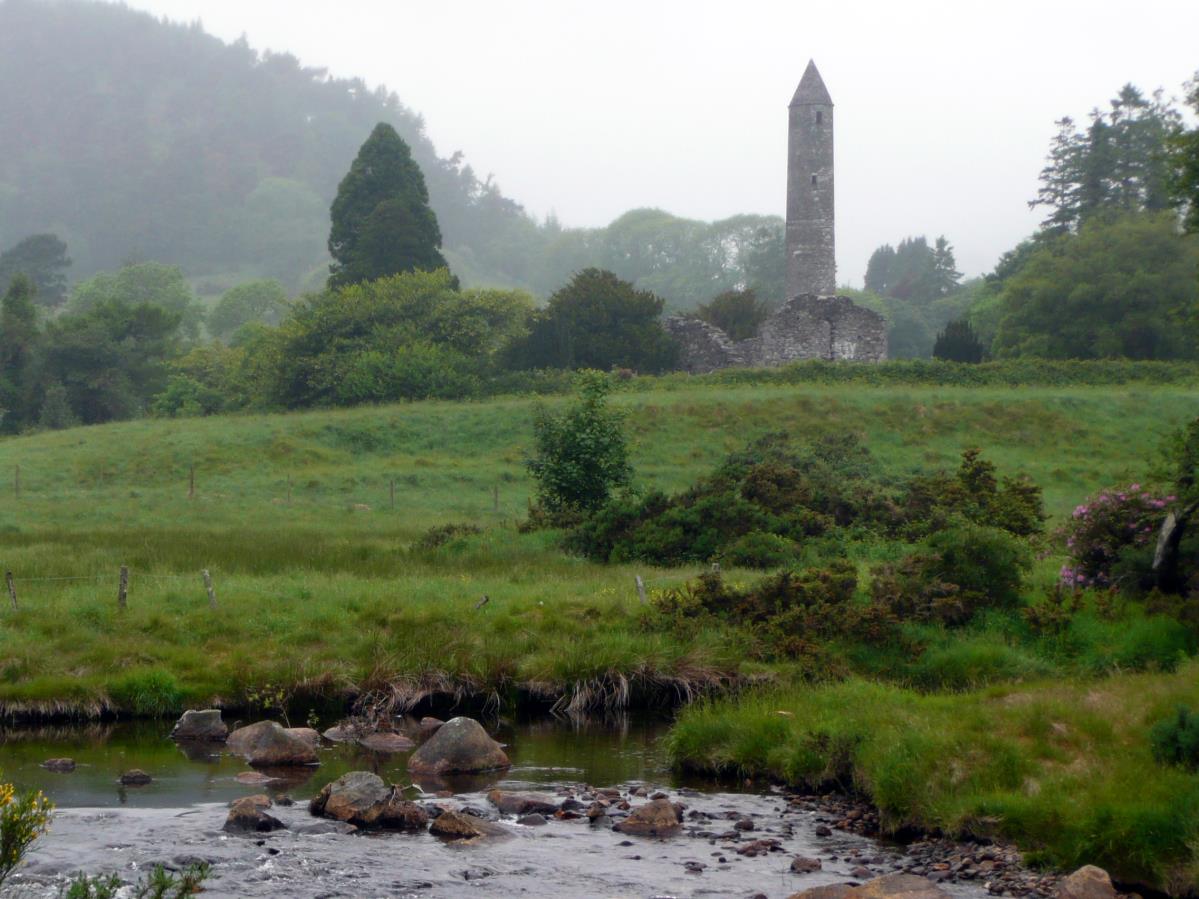 throughout Ireland and served as both bell towers and landmarks for approaching visitors. In its heyday, Glendalough was an extensive settlement containing guest houses, workshops, farm building and dwellings for both monks and a large population of lay people as well as a center for manuscript writing.
throughout Ireland and served as both bell towers and landmarks for approaching visitors. In its heyday, Glendalough was an extensive settlement containing guest houses, workshops, farm building and dwellings for both monks and a large population of lay people as well as a center for manuscript writing.
Through the 18th and 19th centuries, reports were received from Glendalough that included references to “riotous assembly” on the Feast of St. Kevin every June 3.
After a pleasant stroll of the grounds, we returned to Dublin for our final night in that fair city.
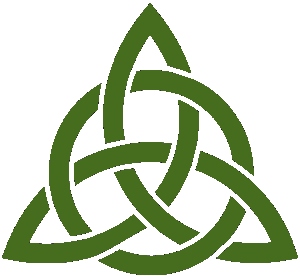
South to Powerscourt
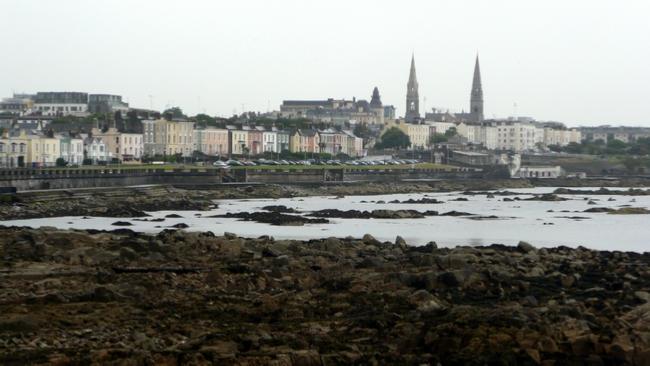
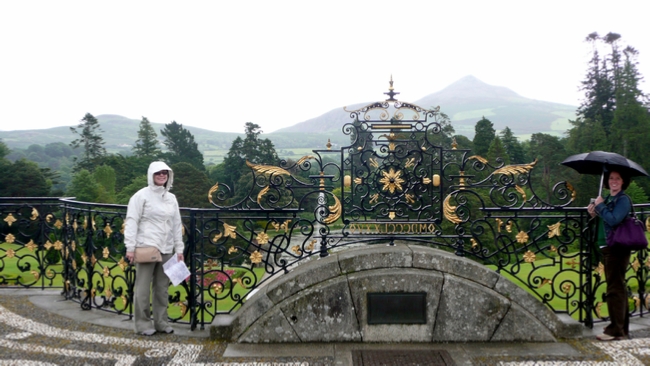
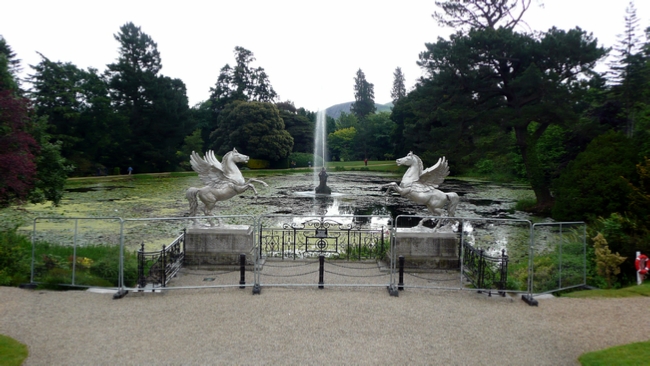
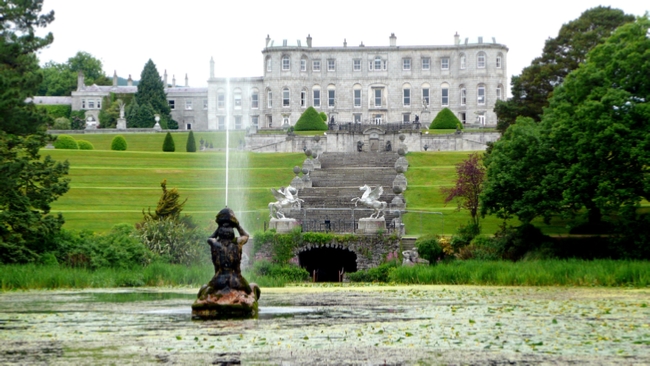
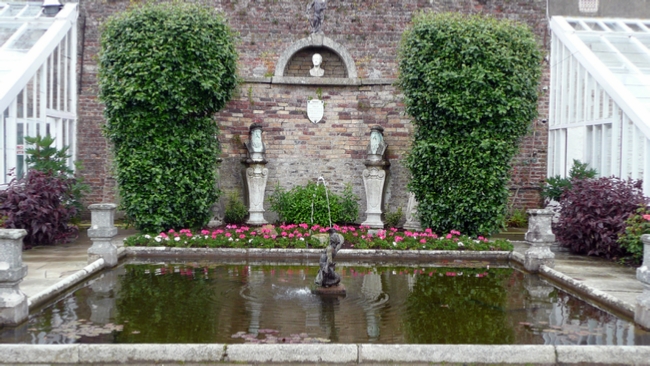

Avoca Handweavers - County Wicklow
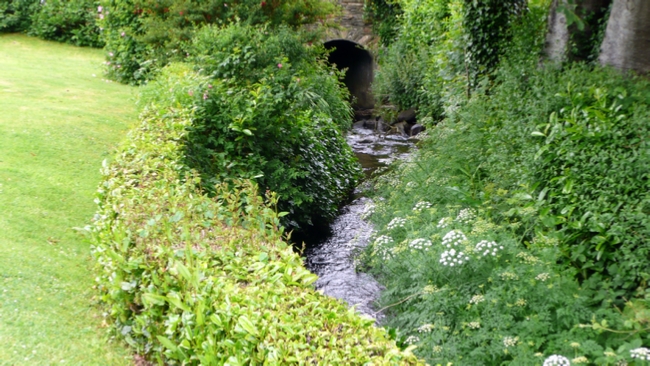
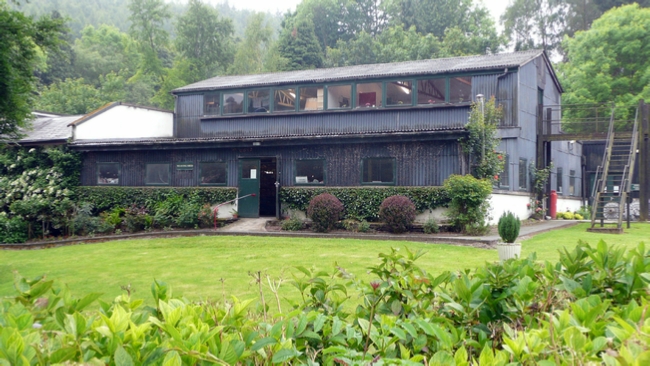

Glendalough - Glen of the Two Lakes
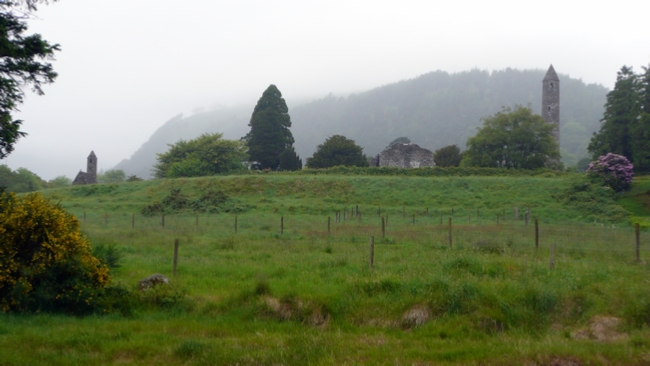
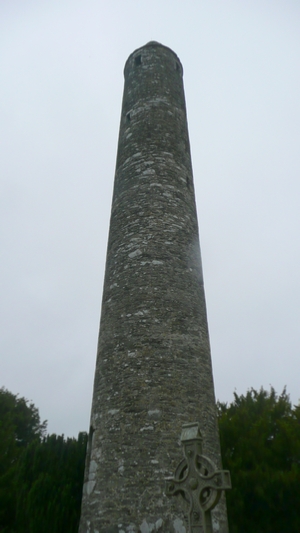
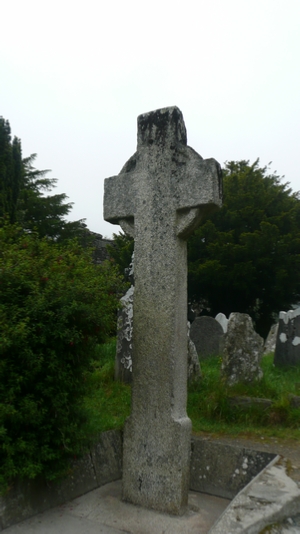


Powerscourt was originally a 13th century castle but is chiefly known today for its elaborate gardens. After passing briefly through the house, I was first struck by the sheer size of the Italian Garden. It stretches for 1200-
 Beyond the lake is the Japanese Gardens. This garden lies on the side of a hill and is riddled with running water and moss lined grottos in the hillside.
Beyond the lake is the Japanese Gardens. This garden lies on the side of a hill and is riddled with running water and moss lined grottos in the hillside.
Proceeding from the Triton Lake I first came upon a hillside lined with conifers. Again, in the background rose Sugarloaf Mtn. A little further along the walkway and I came across a Pets Cemetery. Here were buried many of the pets of the Powerscourt family. Each tombstone was inscribed with a tender note. One I found particularly poignant read simply “Faithful beyond human fidelity”. Truly these were people that felt deeply about their pets.
 The final garden that I chanced upon was the Walled Gardens, so named because it is traversed by a 10-
The final garden that I chanced upon was the Walled Gardens, so named because it is traversed by a 10-From Powerscourt, we proceeded through the lovely village of Laragh and then made a brief foray to the Woolen Mill at Avoca, Co. Wicklow. Here we were given a demonstration of how wool is still hand woven for sales throughout the world. The mill has existed on the banks of the River Avoca since 1723. In 1760, a Fly Shuttle Loom, capable of producing 20 meters of cloth a day was installed. The Fly Shuttle Loom was so named because the weaver, jerking on a shuttle mechanism would cause the shuttle to literally fly from side to side. On installation, the local weavers, fearing the loss of their jobs, went on strike thus once again proving that fear can overcome good sense.
From Avoca, we continued to travel southward to Glendalough. In the Irish it is Gleann Dá Loch
 pronounced glen da lock, the word lough being the equivalent of the Scottish loch, meaning lake. Thus, this is the Glen of the Two Lakes. It is the site of an early monastic settlement founded in the 6th century by St. Kevin, a hermit priest. The settlement flourished for over six centuries being designated as one of two North Leinster dioceses in 1111. In 1398, the English under Roger Mortimer, 4th Earl of March, left it in ruins though it continued as church and place of holy pilgrimage.
pronounced glen da lock, the word lough being the equivalent of the Scottish loch, meaning lake. Thus, this is the Glen of the Two Lakes. It is the site of an early monastic settlement founded in the 6th century by St. Kevin, a hermit priest. The settlement flourished for over six centuries being designated as one of two North Leinster dioceses in 1111. In 1398, the English under Roger Mortimer, 4th Earl of March, left it in ruins though it continued as church and place of holy pilgrimage.
The site is dominated by a Round Tower over 30 meters in height. Towers such as this were often built at religious sights
 throughout Ireland and served as both bell towers and landmarks for approaching visitors. In its heyday, Glendalough was an extensive settlement containing guest houses, workshops, farm building and dwellings for both monks and a large population of lay people as well as a center for manuscript writing.
throughout Ireland and served as both bell towers and landmarks for approaching visitors. In its heyday, Glendalough was an extensive settlement containing guest houses, workshops, farm building and dwellings for both monks and a large population of lay people as well as a center for manuscript writing.
Through the 18th and 19th centuries, reports were received from Glendalough that included references to “riotous assembly” on the Feast of St. Kevin every June 3.
After a pleasant stroll of the grounds, we returned to Dublin for our final night in that fair city.



 To Day 5 - County Cork
To Day 5 - County Cork